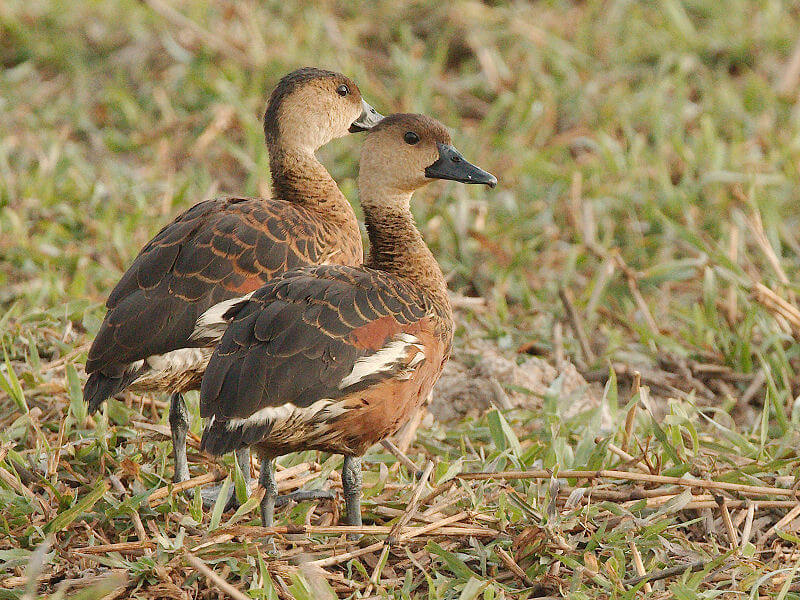Wandering Whistling Duck

Scientific Name
Dendrocygna arcuata
Alternative Names
Whistling Tree-Duck, Water Whistling Duck, Red Whistler
Measurements
| Feature | Male & Female |
|---|---|
| Length | 54–60 cm (21–24 in) |
| Weight | Around 750 g (1.65 lb) |
Status / Origin
This species is native to tropical and subtropical regions of Australia, Indonesia, the Philippines, Papua New Guinea, Timor-Leste, Borneo, and nearby Pacific Islands. There are three subspecies: D. a. arcuata (Indonesia), D. a. australis (Australia), and D. a. pygmaea (New Britain).
Identification
A tall, slim duck with a long neck and legs, looking a bit like a goose. It has rich reddish-brown plumage overall, a paler face and front neck, and dark crown, hindneck, and back. The breast has dark spotting. Flank feathers are long and pale with chestnut edges. The bill and legs are dark. In flight, the bird shows dark underwings, cinnamon-brown body, white under-tail, and legs trailing behind.
Voice
Very vocal. Gives sharp whistling calls and soft twittering sounds. Flocks make almost constant whistling noises during flight.
Diet
Feeds mostly on aquatic plants, seeds, grasses, waterlilies, and bulbs of rushes. Also eats insects and small aquatic animals. They often feed in tight groups, with front birds diving while those behind fly over them.
Distribution
Found in northern and eastern Australia, including the Kimberley, Northern Territory, Queensland, and down to New South Wales. Also present in Indonesia, the Philippines, Papua New Guinea, Timor-Leste, and Pacific Islands.
Habitat
Prefers deep freshwater lagoons, swamps with vegetation, flooded grasslands, rice fields, dams, and wetlands. They stay close to water and swim or dive easily.
Breeding
Breeding happens during the wet season, mainly from December to May or January to April. Nests are shallow scrapes on the ground, hidden in tall grass or shrubs, above flood level. Clutches usually contain 6–15 eggs. They form strong pair bonds and are likely monogamous for life.
Behaviour
They are social and often seen in flocks. They enjoy water and rarely move far from it. They swim, dive, and sometimes make short flights. During rain, flocks move from permanent water to temporary wetlands. Aboriginal communities in northern Australia know and hunt this species, giving it names like djilikuybi, djirrbiyuk, guyiyi, and walkuli.
Wintering
They do not migrate long distances but move locally depending on rainfall and water availability, often dispersing from dry-season waterholes to floodplains and coastal wetlands.
Conservation / Threats
Not currently endangered but faces pressure from wetland loss, agriculture, and urban development. They sometimes feed in grain farms and artificial water areas. Future changes to floodplains and wetlands could harm their habitat.
